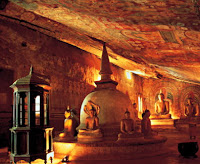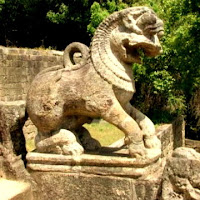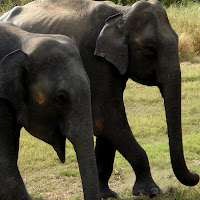Yala is well known & most visited sanctuary situated south-east area in Sri Lanka,East of Tissamaharama in the Hambanthota District,it most popular as Ruhunu National Park. actually 300km away from Colombo,it’s only premium national park conclude five blocks, only one block(block no1-Yala west)currently fit to game view,
Yala is a historical heritage in the south-East as per mahawansaya. it historical records started in 500 BC about Indian price namely Rohana establish City call Rohana,Aganin 307 Bc Prince Mahanaga build city call Magama near Kirindi Oya,until 1900 this area nominated as a free hunting zone, Yala was proclaimed forestry land on March 23, 1900. A British prisoner of war by the name of Aengal Brake was brought to Ceylon in 1907. Subsequently he was appointed the first keeper of the Yala Park.Later the first zone (Block I) of the Yala National Park established in 1938 and was 14,101 hectares in area.
On February 25, 1938 the colonials announced Yala Park as the Yala National Park. The Department of Sanctuaries was established in 1938 and A.D. Wijewardane was appointed its caretaker.
The Block II was opened in 1964 which included 9.31 hectares land area. The third zone (Block III) was established on April 28, 1967 was 40.775 hectares. The Block IV was opened on October 9, 1969 was 26,418 hectares the Block V was opened in 1969 was 6.656 hectares and further 28,905 hectares were constituted as protected area to the Yala National Park.
Park situated Arid Zone, it’s annual rain fall lese than 1000mm which accommodate North east Monsoon from November to January & short spell inter monsoon again march to April expecting, rest of the period dry but it’s has 25 rich water holes to stores annual water requirement-some namely Buttuwa Wewa, Mahaseelawa Wewa,Palatupana Wewa, Wilapala Wewa, Koma Wewa and Gonagala Wewa also mud flat lagoons discharge the responsibility equally .annual temperature between 27c to 37c.
This park recording 32 species mammals including over 500 Asian elephant, 40 individual Leopards identified by their unique facial spot patterns and other characteristics, which makes this area, a premier Leopard hotspot with probably the highest density of Leopards anywhere in the world. Banking crocodiles common view in this park,
Nearly 230 species of bird recording this area,which including migrant endemic & resident species. All five species of sea turtles love to Nesting Park,all five species of venomous snake & non venomous easily find including endemic fresh water fish adding fascinating color in water whole ,40 species of butterfly & the dragonflies painting Ruhunu national park atmosphere softly,
Thick canopy give shade together Milla,Kon,Satin,veera,Palu,Kubuk,mee scrub forest dominated by Kukurumana,Kukulakatu,Ranaweera,280 species of trees distribute among this wilderness ,
Most of visitors no longer just seeing for elephants as it is now known or it’s relatively higher density of leopards as per above disscuss, many of national park in Sri Lanka have substantial wild elephant population but yala is well known destination to see leopard,you can see leopard may cross the road or top of Mara or Palu tree branch usually,Leopard Safari is difference from being on Elephant watching is Visitors may stay at distance & gain the trust of the animal
It may move out of sight if you make any noise & some people are unaware of this, Elephant may come charging towards you but not the Leopard.if you get close through it may spoil the experience for everyone else. Advise to visitors must remain in the your Vehicle because human movement spoil animal & your self discipline & commitment really need to watch them.
This park main entrance situated 40 km beyond the Hambanyhota on A2 ,further four wheel drive more suitable for journey,


























































